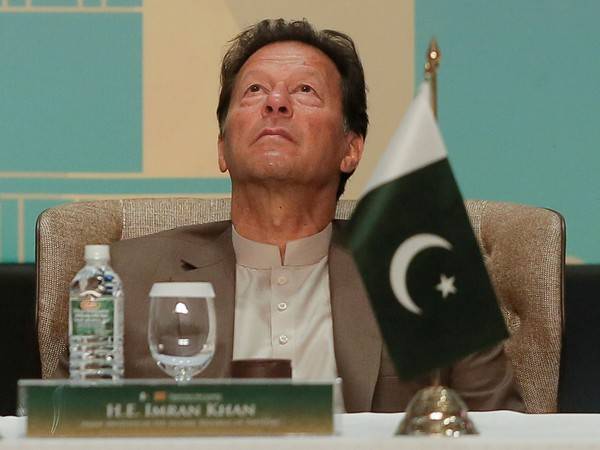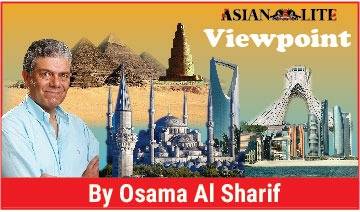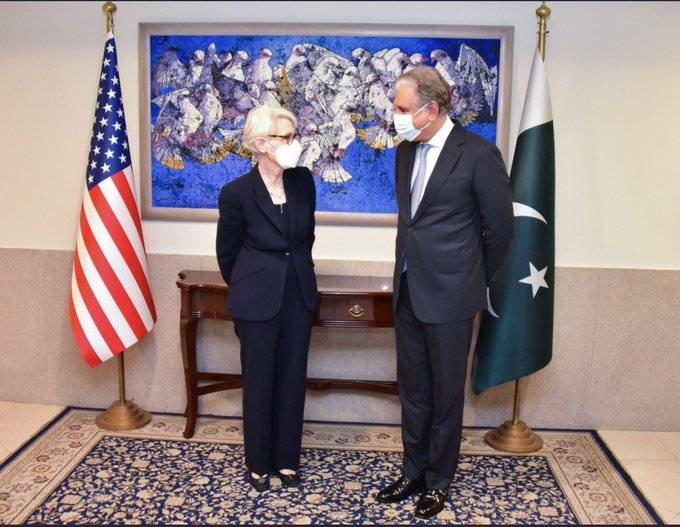Pakistan has had to go through many painful transitions; political assassinations of top government figures, public protests that were often met with violence, a civil war that ended in East Bengal seceding in 1971 leading to the birth of modern-day Bangladesh, military coups, more assassinations and the rise of Islamic radical movements. In between civil governments powerful political dynasties took over and their rule was blackened by mass corruption; a main reason why a country of 220 million citizens, the fifth largest in population, struggles and is crippled by massive foreign debt; approximately $283 billion … writes Osama Al Sharif
Since its blood-drenched and dramatic separation from British ruled India, the newly born Islamic Republic of Pakistan had precious few years to engage in nation-building. It was a bizarre birth of a nation of two main but separate parts, East Pakistan and West Pakistan, later West Bengal. Less than three months later the new nation found itself embroiled in a long and costly war with India over disputed Kashmir—a conflict, along with the tragedy of Palestine, remains open and a constant cause of tension between the two nuclear neighbours.

But Pakistan has had to go through many painful transitions; political assassinations of top government figures, public protests that were often met with violence, a civil war that ended in East Bengal seceding in 1971 leading to the birth of modern-day Bangladesh, military coups, more assassinations and the rise of Islamic radical movements. In between civil governments powerful political dynasties took over and their rule was blackened by mass corruption; the main reason why a country of 220 million citizens, the fifth largest in population, struggles and is crippled by massive foreign debt; approximately $283 billion.
Pakistan’s conflict with India has come at a huge cost to its economic growth. The geographic trap has put it next to Afghanistan; a country rocked by internal and geopolitical tremors for decades but more seriously for Pakistan, with which it has the longest borders, since the Soviet invasion of 1979 and its aftermath.
Pakistan was a major ally of the United States during the Cold War. In fact it was the main CIA base in West Asia, keeping a close eye on Soviet republics and allies, including India. This was one reason why Washington looked the other way when Pakistani generals interrupted civilian life. Gen. Mohammad Zia-ul-Haq took over in 1978 and remained president until his death in a plane crash in 1988. His ruthless rule and his controversial imposition of ultra-conservative Sunni Sharia law is believed to have been a harbinger for things to come; the birth of puritanical Islamic schools, which many years later would bring out the Taliban.

Pakistan played a crucial role in the emergence of the Afghan Mujahideen who, armed by the US and trained in Pakistan, fought the Russians for years. Millions of Afghans found refuge in neighbouring Afghanistan—and many still do. Pakistan may have got more than what it bargained for by helping the Mujahideen and allowing strict Sunni seminaries to thrive.
Despite its alliance with and reliance on the United States, there are dark chapters in the US-Pak ties. What role did the infamous Pakistan secret service, Inter-Services Intelligence, play in enabling the Taliban and harbouring Al-Qaeda’s Osama Bin Laden, remains to be divulged. One thing is true today: Pakistan is now facing radical Islamists movements and its own homemade Taliban who want to take the country backwards.
America’s rash and chaotic withdrawal from Afghanistan last August has shocked its allies, including Pakistan; now ruled by charismatic former cricket champion turned politician Imran Khan. After decades of running against the establishment and the deep state, the 69-year-old was finally elected prime minister in 2018. His mission is to fight corruption, bring in social justice and impose the rule of law.

But his goal to extract Pakistan from its deep-seated challenges—both internal and external—seems almost impossible. His top intelligence chief was the first to land in liberated Kabul to meet the new Taliban government. This week he hosted an Islamic meeting to raise funds to help Afghan citizens who are suffering from food and medicine shortages.
He claims that, for the first time, he runs a corruption-free government. And yet under his watch, Pakistan has borrowed tens of billions of dollars to keep the struggling economy going. And he claims that no country is short of resources but it is the corrupt ruling elite who impoverish any country.
His mission is a tough one: internally he has to stamp out corruption and face radical revisionist movements that are likely to become militant, sucking the country into civil strife. On the foreign policy track, he has to recalibrate Pakistan’s role in a tumultuous and changing region. India is now closer to the United States than ever and his ties with Washington, as well as with traditional Arab allies, are being tested. He has to walk a thin line in dealing with toxic Afghanistan; making sure that the country does not implode and yet keeping a safe distance from the Taliban.
The burden of a bloody and unsettled historical legacy will plague Khan as will the turbulent neighbourhood his country finds itself in. In the past few decades, he is perhaps Pakistan’s best possible hope to stave off local and external dangers. He may not have the luxury of time or the abundance of resources. And with a back crushing foreign debt he certainly has a small area to manoeuvre. On the other hand, if there is one state player that can influence his Afghan neighbour, it is Pakistan and the world should appreciate this important fact.
(Osama Al Sharif is a journalist and political commentator based in Amman)








